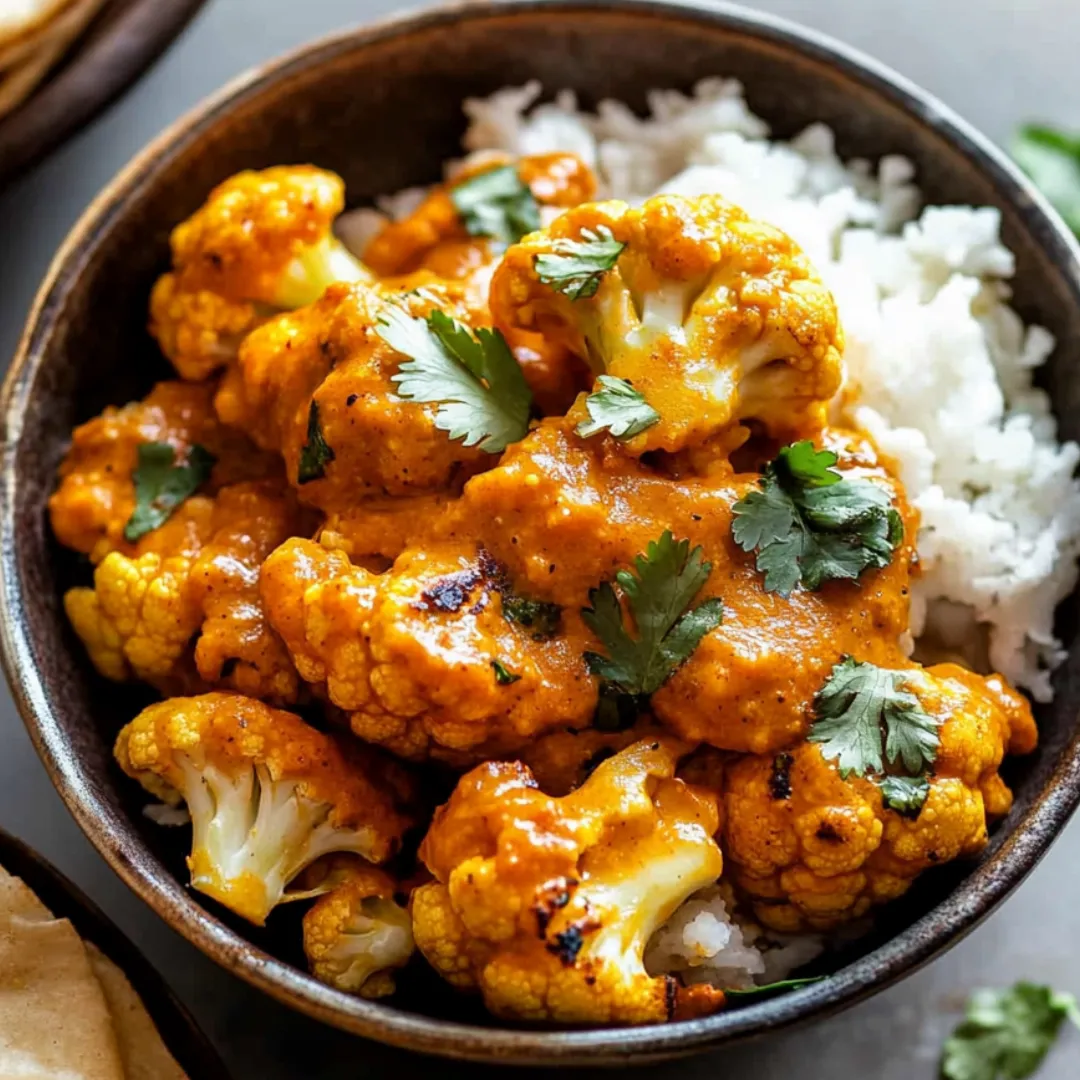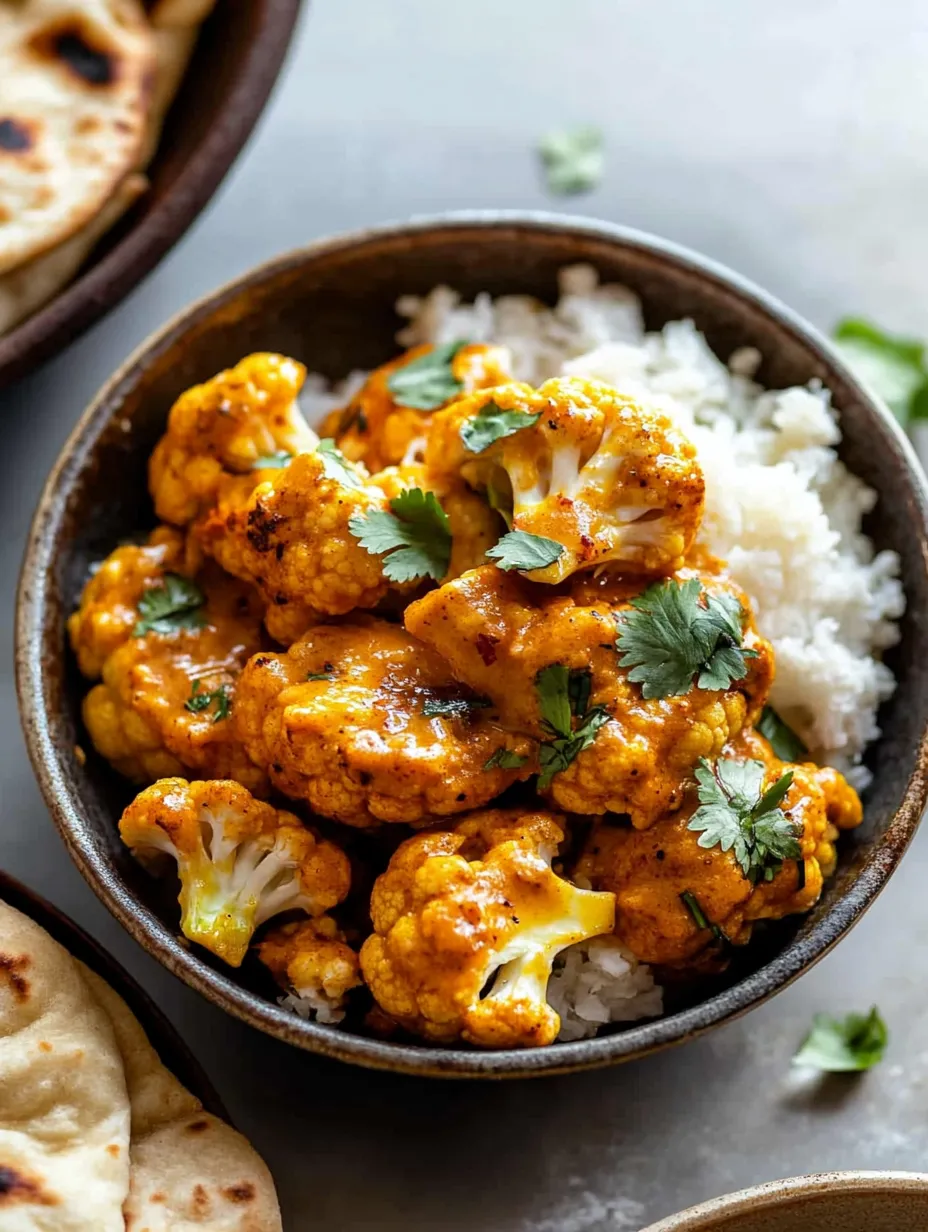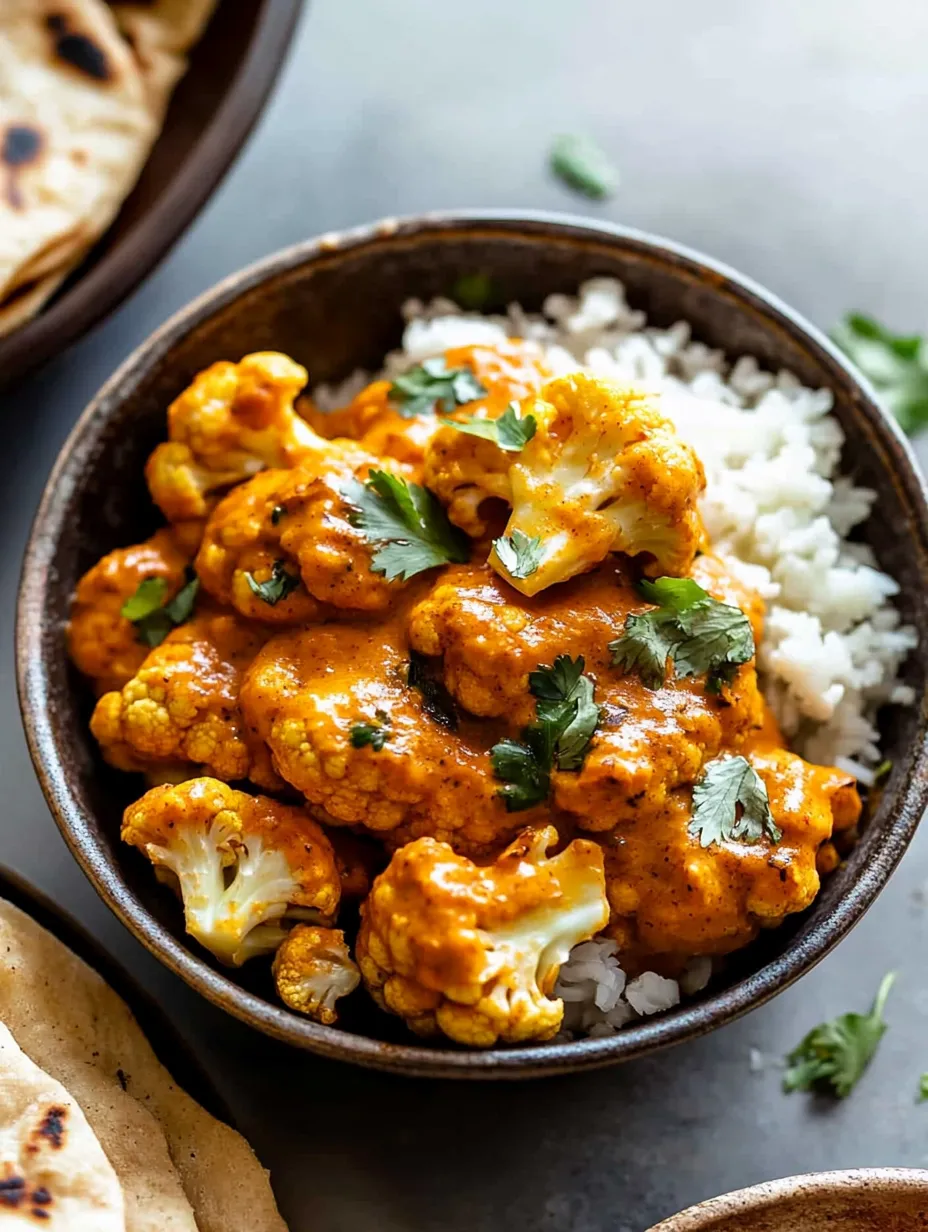 Pin it
Pin it
This butter cauliflower transforms the beloved Indian butter chicken into a vegetarian delight that doesn't compromise on flavor or satisfaction. The tender cauliflower florets soak up the rich, aromatic sauce creating a comforting meal that will please both vegetarians and meat-eaters alike.
I first made this recipe when trying to accommodate both vegetarian and non-vegetarian friends at a dinner party. The vegetarians were thrilled to have something beyond the usual options, and my meat-loving guests ended up asking for seconds of the cauliflower instead of the chicken alternative.
Ingredients
- Fresh lemon juice: Adds brightness and helps tenderize the cauliflower
- Cornstarch: Creates a light coating that helps the sauce cling to the cauliflower
- Garam masala: Provides that authentic Indian flavor profile with warm spices like cinnamon, cardamom, and cloves
- Fresh ginger: Brings a zingy heat that dried simply cannot replicate
- Heavy cream: Creates the signature richness that makes butter dishes so luxurious
- Cauliflower: Absorbs flavors beautifully while maintaining a satisfying texture when cooked properly
- Tomato paste: Adds concentrated umami depth that balances the cream
- Unsalted butter: Allows you to control the salt level while providing richness
Step-by-Step Instructions
- Create the Seasoning Mixture:
- Combine lemon juice, cornstarch, cumin, turmeric, garam masala, and salt in a large bowl. This mixture will not only season the cauliflower but create a light coating that helps the sauce adhere later. The acid from the lemon juice begins breaking down the cauliflower structure making it more receptive to absorbing flavors.
- Brown the Cauliflower:
- Heat oil in a large skillet and cook cauliflower for 7 to 8 minutes until browned in spots. This initial browning creates caramelization which adds depth of flavor. Be patient here as proper browning is essential for developing complex flavors.
- Season the Cauliflower:
- Toss the partially cooked cauliflower in the cornstarch mixture until well coated then return to the skillet for additional cooking. This double cooking method ensures the cauliflower develops flavor while maintaining a perfect texture. Look for charred spots while ensuring florets remain crisp tender.
- Create the Aromatic Base:
- Sauté onions in butter and oil until translucent before adding garlic, ginger, and tomato paste. This layering of flavors creates the foundation of your sauce. Make sure to cook the aromatics until fragrant but not browned as bitter notes can develop quickly.
- Build the Sauce:
- Add the remaining spices to bloom their flavors in the hot fat before introducing the liquids. This technique releases the essential oils in the spices creating more aromatic compounds. When you add the tomato sauce and broth, scrape up any browned bits from the pan bottom as they contain concentrated flavor.
- Simmer to Perfection:
- After adding cream and returning cauliflower to the pan, allow everything to simmer uncovered until the sauce reaches your desired thickness. This gentle reduction concentrates flavors while allowing the cauliflower to absorb the sauce. The uncovered cooking allows excess moisture to evaporate resulting in a silkier texture.
 Pin it
Pin it
The garam masala is truly the heart of this dish. I discovered its importance years ago when I tried making butter sauce with just curry powder. The difference was remarkable. Now I always keep fresh garam masala in my spice cabinet, and even make my own blend when I have the time. My children have grown to recognize its fragrance as the signal that something special is cooking.
Mastering the Perfect Sauce Texture
The key to an exceptional butter cauliflower lies in achieving that silky sauce consistency. If your sauce seems too thin after the recommended simmering time, you can continue reducing it uncovered for a few more minutes. Alternatively, you can make a slurry with a teaspoon of cornstarch and cold water, then slowly add it to the simmering sauce. Remember that the sauce will thicken slightly as it cools, so aim for a consistency just slightly thinner than your desired end result.
Make Ahead and Storage Tips
Butter cauliflower actually improves with time as the flavors meld together. You can prepare the entire dish up to two days ahead and store it in an airtight container in the refrigerator. Reheat gently on the stovetop, adding a splash of cream or broth if needed to restore the original consistency. For longer storage, this dish freezes beautifully for up to 3 months. The texture of the cauliflower will soften slightly after freezing, but many find this even more delicious as it further absorbs the sauce.
 Pin it
Pin it
Customizing Your Butter Cauliflower
This versatile recipe welcomes adjustments based on your preferences or what you have available. For added protein, chickpeas make an excellent addition as mentioned in the notes. Other vegetables like peas, bell peppers, or potatoes can be incorporated. For those who enjoy heat, increase the cayenne or add fresh green chilies. The sauce also works wonderfully with paneer cheese, tofu, or even mixed vegetables. During summer months, I often add seasonal vegetables from my garden alongside the cauliflower for a bounty of flavors and textures.
Frequently Asked Questions
- → What can I serve with Butter Cauliflower?
Butter Cauliflower pairs wonderfully with basmati rice, fresh naan, or even quinoa. You can also add chickpeas for extra protein.
- → Can I make this dish vegan?
Yes! Substitute the heavy cream with full-fat canned coconut milk and replace the butter with a dairy-free alternative.
- → How do I store leftovers?
Store leftovers in an airtight container in the refrigerator for up to 3 days. Reheat gently on the stovetop or in the microwave.
- → Is this dish spicy?
This dish has a mild to medium spiced flavor. You can adjust the cayenne pepper and other spices according to your heat preference.
- → Can I use frozen cauliflower?
Yes, but fresh cauliflower is preferred as it holds up better during cooking. If using frozen, allow it to thaw and drain excess water before cooking.
